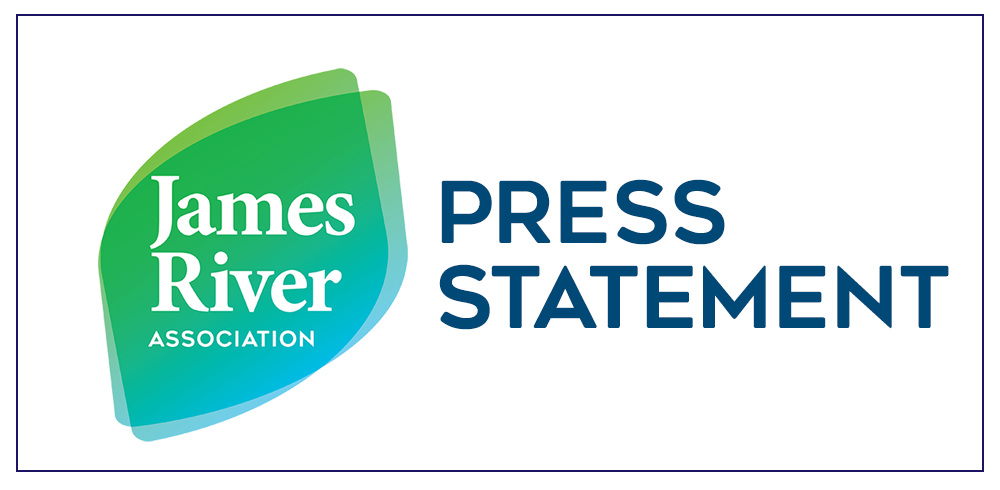PRESS STATEMENT
FOR IMMEDIATE RELEASE:
May 21, 2019
CONTACT:
Jamie Brunkow
Riverkeeper and Senior Advocacy Manager
(757) 634-4541
jbrunkow@jrava.org
2018 Record Rainfall Hampers Water Quality, but not Long Term Trend of Improving James River Health
The latest Chesapeake Bay Report Card was released today, showing that scores for the James River shifted from a B- (60%) in 2017 to a C (49%) in 2018. Scores across the Bay declined last year but maintained an overall C. The annual report card is produced by the University of Maryland’s Integration and Application Network and provides a comprehensive analysis of Chesapeake Bay health by scoring indicators such as dissolved oxygen, underwater grasses and water clarity.
“In 2018 communities across the Chesapeake Bay Watershed experienced record precipitation and increased runoff pollution, but we’re also seeing signs that the river is resilient and improving over the long term,” said Jamie Brunkow, James Riverkeeper and Senior Advocacy Manager at the James River Association.
Water clarity scores across the Chesapeake Bay suffered due to heavy precipitation and polluted runoff, and this was the only indicator given an F (3%) for the James River. Despite a drop in nearly all of the Report Card’s Bay health indicators, the report highlights an improving long term trend for the Bay and for the James River.
Brunkow added, “Water clarity is essential for a healthy James River that supports underwater grass beds and fisheries. Virginia is making progress towards restoring the health of the James River, but the results of the Report Card show that we need to do more to tackle polluted runoff. That means strengthening our programs that help farmers and local governments prevent erosion and build more resilient cities.”
Recently, Virginia released its draft plan for meeting Chesapeake Bay Cleanup goals by 2025. This plan, the Phase III Watershed Implementation Plan, will outline the federal, state, and local actions needed between now and 2025 to ensure that all necessary practices are in place to achieve Virginia’s pollution reduction targets and restore the health of the Chesapeake Bay.
“The Watershed Implementation Plan provides a road map for getting the James River to a grade of A. It’s critical that we have a strong plan which is funded and implemented by 2025, but we need communities to stand up and support more investment and action for the river,” said Brunkow.
The Virginia Department of Environmental Quality is accepting public comments on the draft Phase III Watershed Implementation Plan through June 7th.
####
ABOUT THE JAMES RIVER ASSOCIATION:
The James River Association is a member-supported nonprofit organization founded in 1976 to serve as a guardian and voice for the James River. Throughout the James River’s 10,000-square mile watershed, the James River Association works toward its vision of a fully healthy James River supporting thriving communities. The James River Association believes that “when you change the James, the James changes you.” With offices in Lynchburg, Scottsville, Richmond, and Williamsburg, the James River Association is committed to protecting the James River and connecting people to it. For more information visit www.TheJamesRiver.org.

